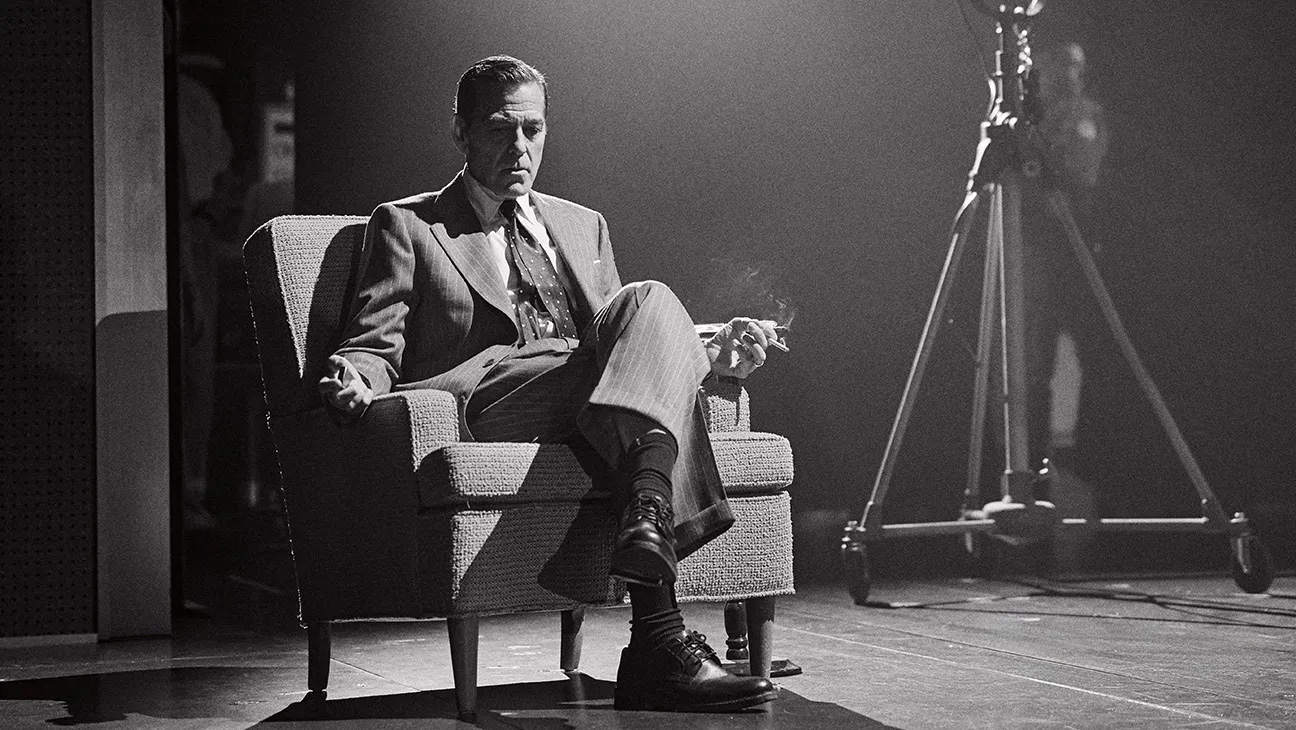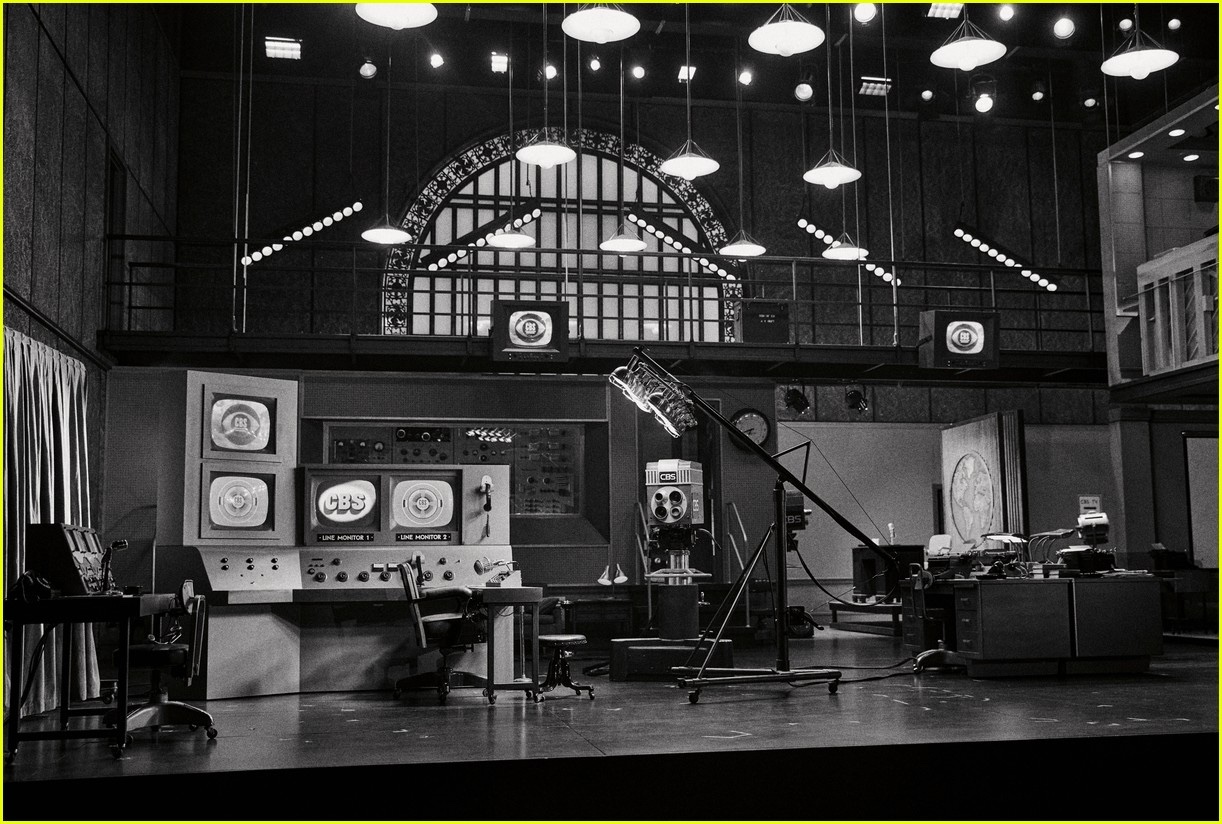****/***** (four stars out of five)
On the surface, Good Night, and Good Luck is the story of a principled man fighting both an unscrupulous politician and a greedy corporation. But just scratch the surface of this new Broadway play by George Clooney and Grant Heslov (and based on their 2005 film) and you’ll find a more profound narrative: a history lesson not about politics or broadcasting, but about our vulnerability to media persuasion and manipulation—notably in an era when people naively believed everything that was delivered to them from their TV sets. To drive that point home, Director David Cromer ends the crisp and fast-moving 100-minute play with a video montage of powerful historical media moments that have etched themselves indelibly into society’s collective consciousness—ending with a very recent image that raised an outraged chorus of jeers from the audience at The Winter Garden Theatre. An image that was, no doubt, used deliberately to spark an audience reaction.

It’s important to remember that in the early 1950s television was an emerging media, and it was during this era that American households were finally able to afford this newfangled technology born only a mere twenty years prior. Good Night, and Good Luck, set in 1953, tells the true story of the legendary and pioneering news broadcaster (and former war correspondent) Edward R. Murrow (George Clooney) and his crusade to right many of the wrongs and slanders of Wisconsin Senator Joseph McCarthy whose attempts to root out “Communists” in the American public violated the Constitutional rights and destroyed the lives of countless innocent citizens during the Second Red Scare. Murrow risked not only the inevitable public smears and false accusations by McCarthy (who is only represented in the play via actual news clips), but the wrath of his show’s primary sponsor, Alcoa, who threatened to pull advertising because of their aversion to “controversy” (i.e. the possibility of losing money).

The play’s set (Scott Pask) is a remarkably realistic recreation of the contemporaneous CBS broadcast studios, with believably authentic teams of writers and tech crews (mostly men) in period perfect costumes (Brenda Abbandandolo) running to and fro amidst clouds of cigarette smoke as they ready newscasts to go live on the air. A brilliant stroke of atmosphere and realism is the acknowledgement of other rehearsal studios in the building, with a band in a room a floor above, stage left. As scene changes took place on the main stage, the band would play, featuring a terrific singer, Ella (Georgia Heers), crooning gorgeous, Billie Holiday-esque numbers. These interstitial performances brilliantly made the set alterations on the stage below disappear through diversion, while simultaneously adding authentic period atmosphere and mood.

Much of the play’s success should be credited to the ensemble (which included a variety of character actors, including Glenn Fleshler, Clark Gregg, and Ilana Glazer, of Comedy Central’s groundbreaking “Broad City” sitcom, making her stage debut), who portray a credible team of newsroom writers, producers and crew members. And that includes Clooney, although he is mostly seen on large screens above and on the sides of the stage, though we see him being filmed on set. It’s a smart move because he’s a telegenic actor, more at home on a screen than on a stage (he hasn’t been in a play since 1986). The use of the screens is a way to embrace Clooney’s talents and strengths as a handsome movie star, which rely on his being in front of a camera. The production wouldn’t have been as successful if he’d merely been on stage.
Despite its “good guy versus bad guy” story structure, which has very little depth, Good Night, And Good Luck succeeds as an historical record and a cautionary tale. It succeeds because, like a good television show, it’s deftly edited and perfectly produced, making the story move so quickly that it ends before the audience has a chance to become distracted.
Good Night, And Good Luck. Through June 8 at the Winter Garden Theatre (1634 Broadway, between West 50th and 51st Streets).












